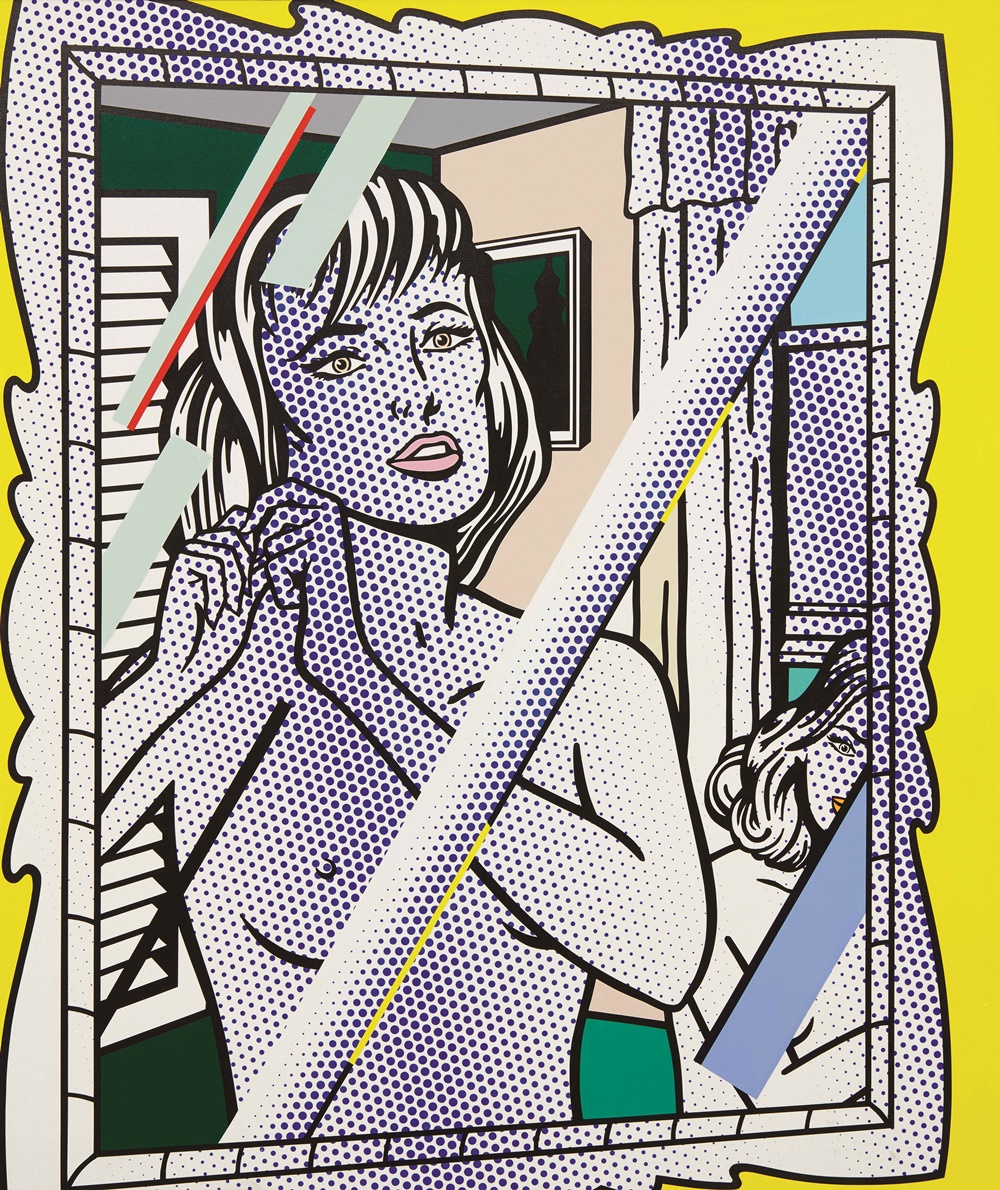
Phillips New York is betting big on a major Roy Lichtenstein canvas this fall, one that has been in the same prestigious private collection (the Rush Family Collection) since it was sold by the Leo Castelli Gallery after it was painted in 1994.
So what’s different about this eight-figure priced work than the many other blue chip masterpieces that will come on the auction block next month?
Phillips is not shying away from the fact that a mentally unstable woman attacked the painting while it was on loan to the Kunsthaus Bregenz in Austria in 2005.
A passage in the book Hall of Mirrors: Roy Lichtenstein and the Face of Painting in the 1960s, by Graham Bader, described the incident:
In 2005, one day before the close of the most successful exhibition in its history, Austria’s Kunsthaus Bregenz was the site of a slashing. The exhibition in question was “Roy Lichtentstein: Classic of the New;” the victim was Lichtenstein’s 1994 painting Nudes in Mirror; and the perpetrator, armed with screwdriver, spray paint, and pocket knife, was a thirty-five-year-old Munich ex-prostitute suffering, it would soon be reported, from schizophrenia. According to newspaper accounts, the attacker’s actions were spurred by her conviction that the painting was a fake—that as the Coburg Neue Presse reported, Nudes in Mirror ‘was not a genuine Roy Lichtenstein’—a claim the show’s curator, having had insult added to injury, of course immediately refuted.
The attack left four 12-inch slashes in the canvas. The painting has since undergone expert restoration that has left the damage—from the front at least—virtually invisible, Scott Nussbaum, the auction house’s head of department and senior vice president of 20th Century and Contemporary Art told artnet News in a phone conversation.
In fact, he and Phillips experts are urging potential buyers to embrace the vandalism as an integral part of the painting’s history—one that almost adds value a major work from Lichtenstein’s oeuvre.
“It’s part and parcel with the painting. It’s part of its history and it’s part of its mythology,” said Nussbaum.”It’s something that was very interesting to us when we were considering taking the work in, and something that we’re not shying away from. It’s an indelible part of this work’s past and part of the history of vandalism of masterworks in general.”
In fact, in its catalogue entry Phillips has taken the added step of outlining similar instances in history where masterpieces were attacked, including art dealer Tony Shafrazi‘s attack on Pablo Picasso’s Guernica in 1974, the 1975 attack on Rembrandt‘s The Night Watch, multiple attacks on the Mona Lisa, as well as an attack on a Barnett Newman painting at the Stedelijk Museum in Amsterdam in 1986.
“We are making a conscientious decision to differentiate between damage that occurs unintentionally and something like this which is very deliberate and very motivated,” said Nussbaum. “We knew the history of the work and when we were first considering it, we more or less just said ‘lets see what the painting looks like before we make any judgments.’ And we saw it for the first time, our concerns disappeared.”
Nussbaum said the restoration of the work was “done magnificently,” adding that you only “see the kind of wounds that this work has from the back. They’re almost like battle scars. This is different from the typical restoration, which you kind of whisper about.”
Will buyers bite? According to the artnet Price Database, a comparable Lichtenstein nude, Seductive Girl (1996), sold for $31.5 million at Christie’s New York in 2013 on an estimate of $22 million–28 million. The overall record for a work at auction by the artist is $95.4 million, for Nurse (1964), which sold at Christie’s in November 2015.
Nussbaum notes that there are about 21 works in this series, and that most are in private collections and rarely come on the market. “It’s the type of picture that when you see it in person, is truly a magnificent, awe-inspiring picture.”